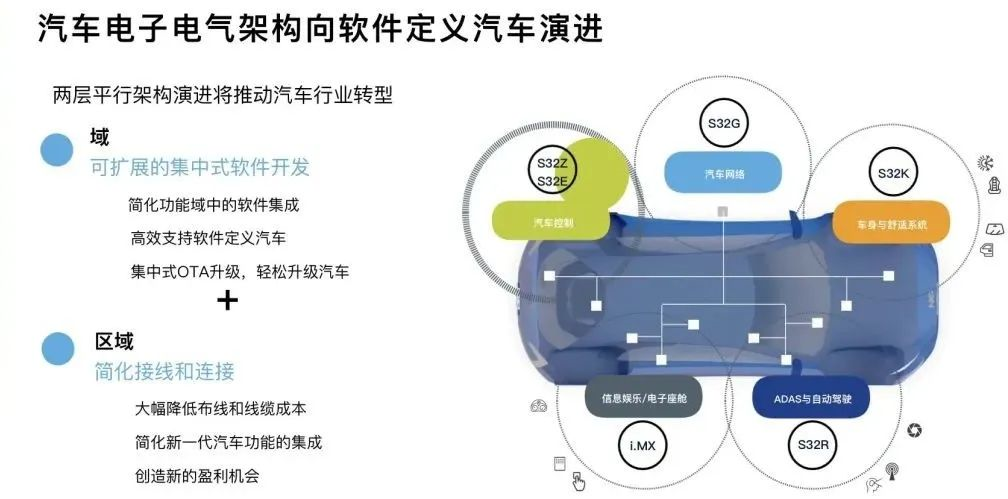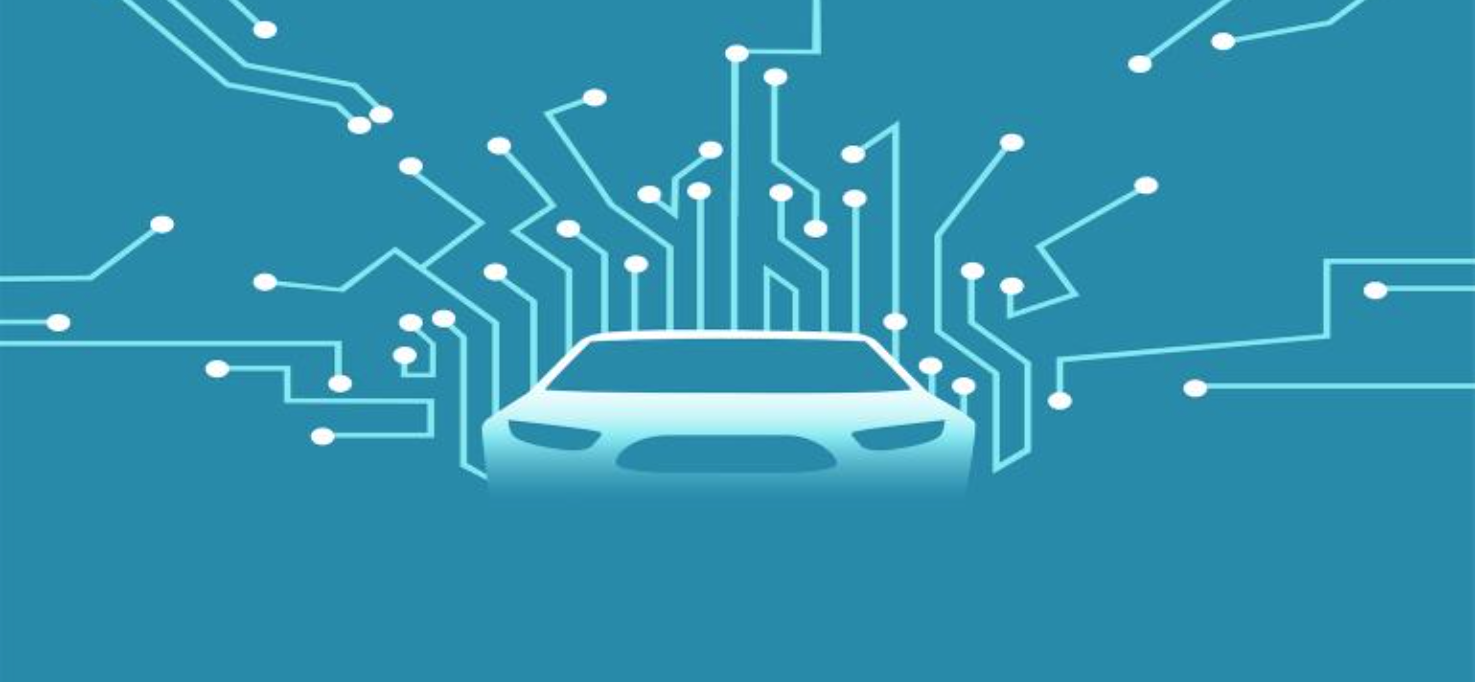Shortening Chain Rapidly
“In the past, few automakers would join us in releasing or showcasing our technology products. After all, chips are Tier 2 (secondary supplier).” An NXP employee told “Electric Vehicle Observer”.
And at the end of the speech, the general manager of XPeng Motors’ embedded platform, Yu Peng, said, “We hope to have more opportunities like this to exchange views on our electrification plan, and for NXP to discuss the future direction of semiconductor technology”.
On October 25, NXP announced joint cooperation projects with Great Wall Motors, NIO, and XPeng Motors in the fields of electronic and electrical architecture and electrification.
Starting from the “chip drought” in 2019, it has driven OEMs to cross the Tier 1 (primary supplier) and directly contact chip suppliers in the Tier 2 or even Tier 3 position. Although the chip shortage has not completely ended, the direct cooperation between automakers and chip suppliers has extended from “supply guarantee” to joint development.
In the era of electric intelligence, what kind of underlying automotive technology and products are needed? How can the long-cycle and heavy-asset automotive and semiconductor industries adapt to new challenges that iterate as fast as mobile phones? What kind of role will each party play in the midst of change?
“Today’s trend of rapid iteration of automotive products and technology has resulted in the R&D cycle of the entire vehicle being shortened from 4 years to 2 years, and the chip industry’s development cycle is two years long. Our response speed throughout the chain needs to be accelerated as it is simply impossible to respond to customer demands as we used to.“
Li Xiaohe, the Vice President of Global Operations and General Manager of New Energy and Driver System Product Line at NXP, told “Electric Vehicle Observer”: In the past, the automotive industry chain consisted of OEMs, Tier 1, Tier 2, and so on. Nowadays, OEMs are beginning to co-develop directly with battery or chip manufacturers who were originally in positions T2 or T3, and even adopting a self-developed mode of vertical integration in some critical areas.
“In the smart and new energy fields, the automotive industry chain is rapidly shortening“.The industrial chain can be shortened, but some time cannot be shortened. Generally, it takes 3-6 months to certify the safety of automotive functions for car chips, and it takes about a year to reach the highest ASIL-D level, which still cannot match the current two-year development cycle of the whole vehicle.

“So the most important thing is to enhance the interaction with the end customer (automakers, battery factories), understand the electronic and electrical needs of the customer, and ultimately solve the problem; the second is to have a long-term system-level innovative plan, forming a chain from system innovation to product innovation to IP innovation.” Li Xiahe said.
“In this way, it is possible to predict the customer’s needs in a few years without waiting for the customer to make a request, and then adapt to the market change speed with the semiconductor R&D cycle.” Li Xiahe said.
However, the needs of automakers are not consistent. Chips are a capital-intensive industry with a development cost of tens or even hundreds of billions of dollars, and the break-even point of millions of chips cannot be supported by the size of one or two automakers.
How to balance the common characteristics of chip products and the pursuit of self-differentiation by automakers?
In current products, NXP builds a highly reusable basic core, which can not only accelerate product iteration speed but also provide some customized products for automakers on this universal core.
But Li Xiahe also said that there may be some customized chips offered in the future. However, this will be based on three premises: having universality in technology, having a common foundation in business, and building on highly universal IPs.
Joint development of vehicle systems
The cooperation between automakers and chip suppliers is not limited to a single product, but is conducted at a larger vehicle systems level.”In fact, we were also chatting with Great Wall at noon. There is a question mark about whether electronic and electrical architecture (EEA), should have fewer nodes. As of now, the EEA architecture has been constantly changing, and everyone has their own different routes, creating a diverse landscape.” Zhou Xiang, the Market Director of Automotive Electronics for NXP’s Greater China Region, said.
During the era of fuel vehicles, the technology route for the EEA architecture was basically established. T1 provided specific EEA designs based on the vehicle manufacturer’s overall design requirements, and integrated corresponding control, gateway, and wiring layouts.
However, in the era of electric and intelligent vehicles, EEA has risen from a basic bottom-level communication path to the automotive hardware neural network.
Although Bosch was the first to clearly set out the technology route from distributed to centralized, and ultimately to a central computing platform, “there is currently no T1 that can provide an EEA architecture design for electric and intelligent vehicles that is universally applicable”.
Based on their own product positioning and technical capabilities, different automakers have different ways of arranging the domain control for the EEA architecture, as well as different choices for domain integration and types of communication networks. “Therefore, cooperation with chip manufacturers – the core components at the bottom level – has become the inevitable choice for automakers to seek fast and new opportunities.”
Previously, Great Wall and NXP had cooperated for a long time in areas such as ADAS, electrification, and in-vehicle networks. This time, the two sides established a joint innovation laboratory, focusing on the joint research and definition of the new generation of EEA architecture.
NXP believes that the future EEA architecture will be composed of two parallel architectures. An upper domain control/computing platform supports scalable centralized software development, while a lower area that greatly simplifies wiring and connections can lower costs and create new profit opportunities.
 On top of this, NXP has launched its S32 series of products, which cover the demands of various parts of the automotive industry including vehicle control, vehicle body, gateway, new energy, smart cabin, and smart driving MCU/MPU.
On top of this, NXP has launched its S32 series of products, which cover the demands of various parts of the automotive industry including vehicle control, vehicle body, gateway, new energy, smart cabin, and smart driving MCU/MPU.
In addition, NXP is fully developing a 5nm process product for advanced intelligent driving networked cars.
These core hardware products provide the foundation for chip makers and automakers to jointly develop.
“NXP is pleased to deepen its cooperation with Great Wall Motor. With the powerful product innovation potential of the S32 automotive processor platform, we are releasing the innovation potential of the next generation of electronic electrical architecture together.” said Li Tingwei, Senior Vice President and President of Greater China at NXP.
Mature products unlock energy efficiency
The further cooperation between automakers and T2 chip makers is not limited to the still-evolving intelligent field, and there is still potential to be further tapped in the mature electrification industry.
This time, NXP cooperated with NIO and XPeng Motors in the BMS AFE (Battery Management System Analog Front-End Chip) and Advanced High-Voltage Isolation Gate Drive Chip respectively.
Among them, NXP’s latest generation of high-precision 18-series ASIL-D battery management analog front-end IC solution will make its global debut in XPeng Motors, and is planned to be mass-produced in 2023.
BMS AFE is typically used in electric vehicles, high-voltage mobile devices, backup battery systems, and high-voltage data acquisition systems.
Meanwhile, the NIO ET7, ES7, and ET5 vehicles that have been successively launched are equipped with NXP’s latest generation of GD31 series of gate-drive chips. The chips are single-channel gate drivers for IGBT and SiC, providing high surge/discharge current, low dynamic saturation voltage, and rail-to-rail gate-level voltage control.
 “In collaboration, NXP Semiconductors will assist NIO in the transition and upgrading from IGBT to silicon carbide,” said Li Tingwei.
“In collaboration, NXP Semiconductors will assist NIO in the transition and upgrading from IGBT to silicon carbide,” said Li Tingwei.
Both AFE and GD31 are NXP’s universal products. It is worth noting that although based on products, the two sides are not just a simple procurement relationship.
“Nowadays, we focus more on how to efficiently and reliably build products into complete systems to better support our customers’ needs,” said Li Xiaohè.
Take the battery management system as an example. Li Xiaohè said that the hardware level of the battery management system has been basically leveled up, and AI machine learning methods have begun to be introduced in the software part. In the future, the software system’s modeling and model maintenance capabilities will be crucial to the management accuracy.
“Although we are born with hardware, we want to provide customers with a convenient architecture as much as possible to optimize all the hardware in the system, provide drive functional safety manual software that supports mass production, and cloud platforms.” said Li Xiaohè. “Essentially, we want to build an infrastructure that allows customers to tap into their software innovation capabilities.”
Through the software and hardware optimization of the battery management system, battery efficiency could improve by 5-10%. In other words, the endurance capacity of users can be increased without increasing the battery capacity.
Such an effect is obviously not achievable after just one turn of the key.
In recent years, NXP has continuously expanded its software service team in China. A local research and development system has been established with more than 1600 research and development engineers to support local definition, design, and development.”Many of the top customers for new energy vehicles are now in China. As a result, NXP has established a comprehensive local team and directly communicated with customers in China. We have also developed new products defined and developed in China. For us, the most important thing is to help Chinese customers create value with our products and services.” Li Xiahe said.
This article is a translation by ChatGPT of a Chinese report from 42HOW. If you have any questions about it, please email bd@42how.com.
